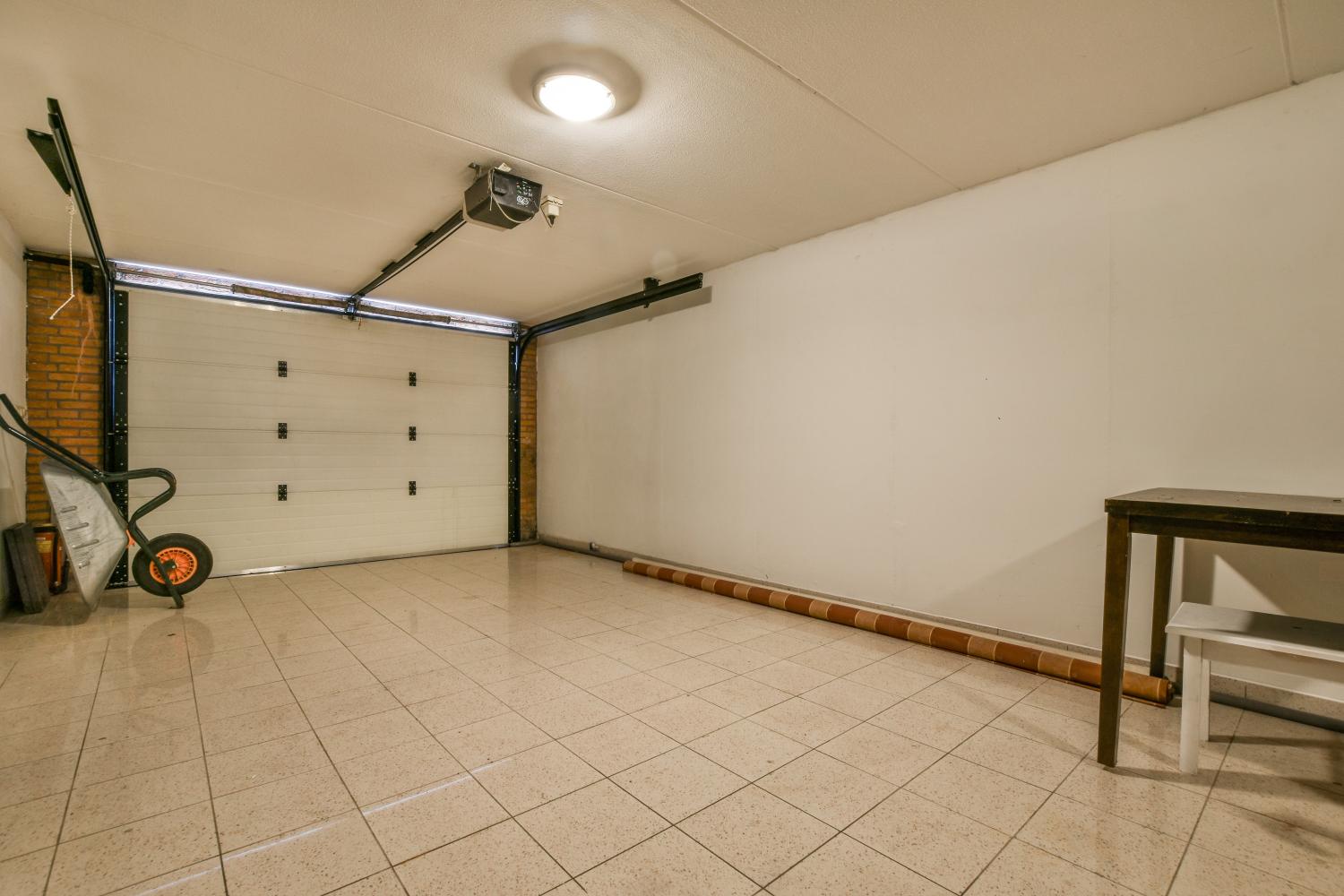
Contents
Imagine you’re installing a new insulated steel overhead garage door to improve your home’s energy efficiency. It’s essential to select the right material and accurately measure your garage opening for a seamless fit. Each step in the installation process, from gathering tools to adjusting springs, plays an important role in the door’s functionality. Let’s explore essential tips that can make this installation smoother and more effective, ensuring your door operates safely and efficiently.
Key Takeaways
- Choose the right door material, such as steel for durability or wood for aesthetics, based on your needs and preferences.
- Measure the garage opening carefully, accounting for height, width, depth, and any obstructions for a proper fit.
- Follow manufacturer instructions meticulously during installation, ensuring tracks and door panels are aligned and secure.
- Test safety features and door operation thoroughly after installation, checking sensors and emergency mechanisms for functionality.
- Schedule regular maintenance, including lubrication and tightening hardware, to ensure smooth operation and prolong the door’s lifespan.
Choose the Right Overhead Garage Door Material
When selecting the right door material for your residential overhead doors, what factors should you consider?
First, you’ll want to explore various door material types, such as steel, aluminum, wood, and fiberglass. Each type offers distinct advantages, so understanding your needs is essential. For instance, steel doors are durable and low-maintenance, while wood doors provide aesthetic appeal but require more upkeep.
Next, consider the insulation benefits. Insulated doors help maintain your garage’s temperature, reducing energy costs and enhancing comfort. If you live in a region with extreme weather, investing in an insulated door can make a significant difference.
Finally, think about your home’s architectural style and personal preferences. Choosing a door that complements your home’s design can enhance its overall appearance.
Ultimately, the right material will meet your functional requirements and contribute to your sense of belonging in your community.
Measure Your Garage Opening Accurately
Accurate measurements of your garage opening are vital for ensuring a proper fit for your new overhead door. Start by measuring the width, height, and depth of the opening using a reliable tape measure.
Don’t just take one measurement; measure twice to account for any discrepancies. It’s not uncommon for garage openings to be slightly uneven, so check at multiple points to confirm consistency.
Next, plan ahead by considering any obstructions, like light fixtures or shelves, that might affect the installation. Make certain to note these details, as they can impact the door’s functionality.
Also, remember to measure the headroom above the opening; this space is essential for the door’s tracks. Taking the time to measure accurately will save you headaches later and ensure your new overhead door operates smoothly.
Gather Necessary Tools and Equipment
Before you start installing your overhead door, you need to gather the right tools and equipment.
Make sure you have an essential tools checklist to avoid interruptions during the installation process.
Additionally, don’t underestimate the importance of safety gear to protect yourself while working.
Essential Tools Checklist
To ensure a smooth installation of residential overhead doors, having the right tools and equipment on hand is vital.
Start by gathering basic hand tools like a hammer, screwdrivers, and a level. You’ll also need power tools, such as a drill and a saw, to ascertain precision during the installation process.
Additionally, include tool types like wrenches and pliers for tightening and adjusting hardware. Don’t forget measuring tools; accurate measurements are essential for effective installation techniques.
A ladder may also be necessary for higher installations.
Safety Gear Importance
Gathering the right tools sets the stage for a successful installation, but safety gear plays an equally important role in ensuring your well-being throughout the process. Before you begin, invest in essential protective equipment such as safety goggles, work gloves, and steel-toed boots.
These items safeguard against potential hazards like falling objects and sharp edges, reducing the risk of injury. Additionally, consider using a hard hat if you’re working in an area with overhead risks.
Harnessing the power of safety gear protects you and fosters a culture of safety within your team. Remember, prioritizing your safety creates a sense of belonging, ensuring everyone feels secure during the installation process.
Your commitment to safety reflects professionalism and care.
Follow Manufacturer Instructions Carefully
When installing residential overhead doors, adhering to the manufacturer’s instructions is essential for ensuring a safe and effective setup.
These manufacturer guidelines provide vital information tailored to the specific model you’re working with, helping you avoid potential pitfalls.
Before you begin, carefully read the installation manual, paying close attention to each step.
This document outlines necessary tools, assembly procedures, and safety precautions that are imperative for a successful installation.
Install the Tracks and Rollers First
After you’ve reviewed the manufacturer’s instructions, start by installing the tracks and rollers, as this forms the backbone of your overhead door system.
Begin with track installation; verify the tracks are level and properly aligned with the door opening. Use a level to double-check your work, as any misalignment now can lead to bigger issues later on.
Next, install the rollers into the brackets. Pay careful attention to roller alignment; they must glide smoothly within the tracks for peak operation.
Adjust the brackets as needed to achieve perfect alignment, keeping the door’s weight distribution in mind. Secure everything tightly, but don’t overtighten, as this can cause unnecessary stress on the components.
Doing this step correctly ensures a functional door and provides peace of mind, knowing you’ve laid a solid foundation for the rest of the installation.
Mount the Door Panels Securely
With the tracks and rollers securely in place, you can now focus on mounting the door panels. Start by laying out the panels according to the manufacturer’s instructions. Use appropriate door alignment techniques to ensure each panel fits snugly within the tracks.
Begin with the bottom panel and work your way up, securing each panel with screws or brackets as specified. It’s essential to check for level and plumb as you go; this helps prevent future operational issues.
Incorporate panel reinforcement methods to enhance the structural integrity of your door. This might include adding braces or using thicker materials if necessary. Be certain to tighten all fasteners properly to avoid any looseness.
Once all panels are mounted, double-check the alignment and adjust as needed to ensure a smooth operation. Taking these steps will help you achieve a reliable and durable overhead door installation.
Adjust the Springs for Proper Tension
To ensure your overhead door operates smoothly, adjusting the springs for proper tension is essential. Proper spring adjustment ensures that your door opens and closes without strain, enhancing its longevity and performance. You’ll want to calibrate the tension according to the door’s weight and size.
Here’s a useful guide for spring tension calibration:
| Spring Type | Recommended Tension |
|---|---|
| Extension Springs | 40-50 lbs per spring |
| Torsion Springs | 25-30 lbs per 100 lbs of door |
| Overhead Garage Door Weight | Adjust according to specs |
Before making any adjustments, unplug the opener and verify you’ve got the right tools on hand. Remember to make small adjustments and test the door’s balance frequently. This careful approach will help you achieve ideal performance and safety for your residential overhead door.
Test the Door Operation Thoroughly
Once you’ve adjusted the springs, it’s essential to test the overhead garage door operation thoroughly.
Start by checking the opening and closing mechanisms to ensure smooth movement, and inspect all safety features to confirm they’re functioning properly.
Finally, listen for any unusual noises that might indicate underlying issues.
Check Opening and Closing
Before finalizing the installation of your residential overhead garage door, you should thoroughly test its opening and closing operation. This step ensures your door functions smoothly and safely.
Here are key points to focus on:
Check alignment: Confirm the door is level and properly aligned with the tracks.
Monitor movement: Observe how the overhead garage door moves up and down; it should glide effortlessly.
Listen for noise: Pay attention to any unusual sounds that might indicate issues.
Inspect stops: Verify that the overhead garage door stops securely when fully opened or closed.
Test the remote: Confirm remote operation is responsive and consistent.
Inspect Safety Features
Inspecting safety features is essential to ensure the reliable operation of your residential overhead garage door. You should thoroughly test the overhead garage door’s operation to confirm that the safety sensors are functioning correctly. These sensors prevent the overhead garage door from closing on obstacles, protecting both people and property. Make sure the emergency release mechanism works effortlessly, allowing quick access when needed.
| Feature | Action Required | Status |
|---|---|---|
| Safety Sensors | Test for proper operation | Functional |
| Emergency Release | Check for ease of use | Accessible |
| Overall Functionality | Perform a full cycle test | Smooth |
Listen for Unusual Noises
How can you ensure your overhead door operates smoothly? One essential step is to listen for unusual noises during the operation. These sounds can indicate underlying issues that need addressing.
Implement these door maintenance tips to diagnose potential problems:
- Rattling or shaking could signal loose hardware.
- Grinding noises might mean worn rollers or tracks.
- Squeaking sounds usually suggest inadequate lubrication.
- A popping noise may be due to misaligned components.
- Humming or buzzing can indicate electrical issues.
Ensure Safety Features Are Functional
While you focus on installing your residential overhead garage door, it’s vital to ensure that all safety features are functional.
Start by checking the safety sensors; these are fundamental for detecting objects in the door’s path. Verify they’re aligned correctly and free from obstructions. Test them by placing an object in the doorway; the overhead garage door should reverse when it makes contact.
Next, confirm that the emergency release mechanism is operational. This feature allows you to manually open the overhead garage door during a power outage or malfunction. Familiarize yourself with its location and operation so you can act quickly if needed.
Regularly inspect these safety features after installation, as they can wear over time. By confirming these systems work properly, you’re following guidelines and prioritizing the safety of your home and loved ones.
This commitment to safety fosters a sense of community and belonging in your neighborhood.
Final Thoughts
By following these tips, you’ll transform your garage into an efficient and stylish space. Imagine the smooth glide of your new overhead door, perfectly aligned and responding effortlessly to your remote. With the right material, accurate measurements, and careful installation, you’ll ensure safety and functionality for years. Regular maintenance will keep it operating like new, enhancing your home’s curb appeal while providing peace of mind. Enjoy the seamless convenience of your expertly installed overhead garage door!
Recent Posts
5 Expert Tips for Installing Residential Garage Doors
Installing a residential garage door might seem simple, but even small mistakes can lead to
Essential Tips for Installing Residential Overhead Doors
Installing residential overhead doors can seem intimidating, but with the right approach, it’s manageable. You’ll
Top Errors to Avoid in Garage Door Installation
A garage door installation can feel like traversing a maze, where one wrong turn can

